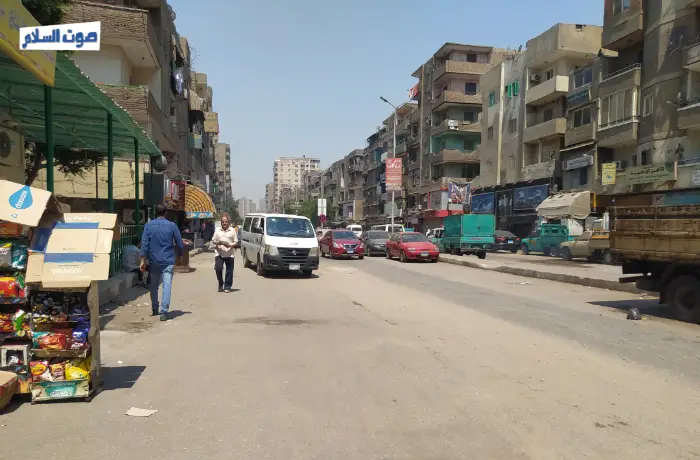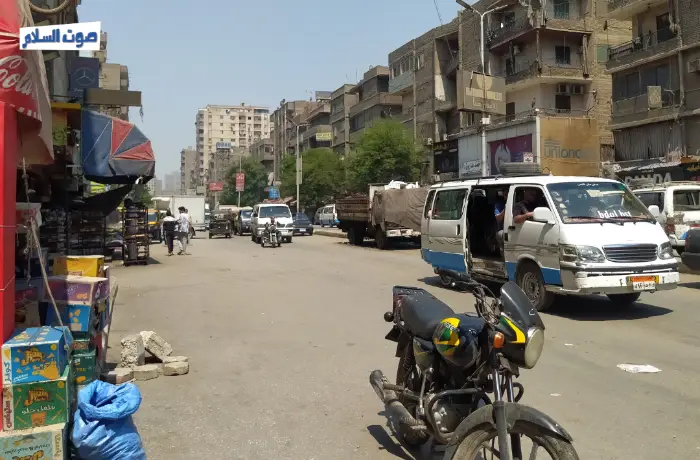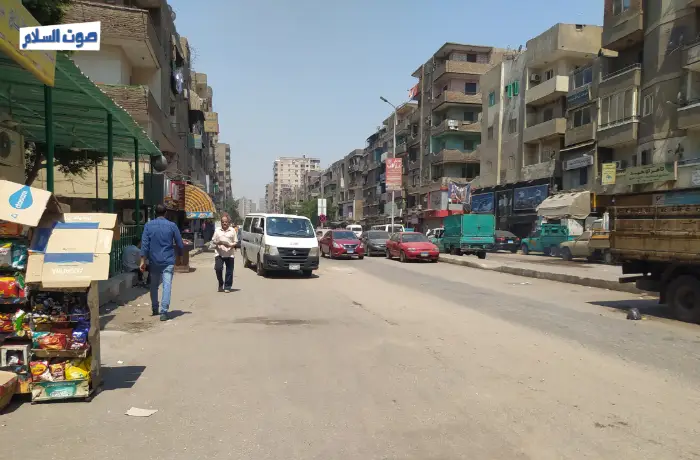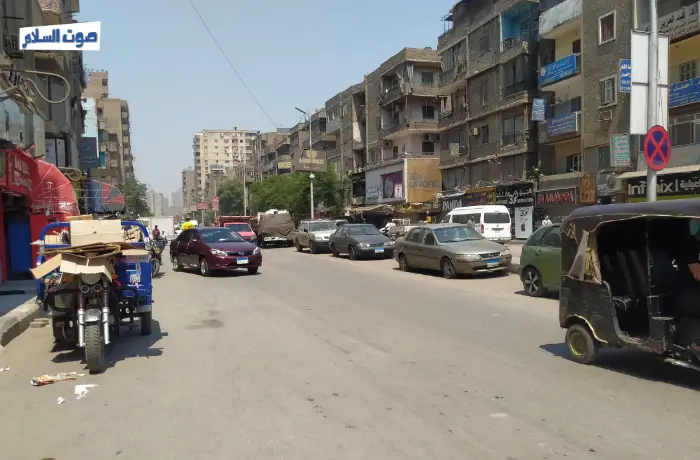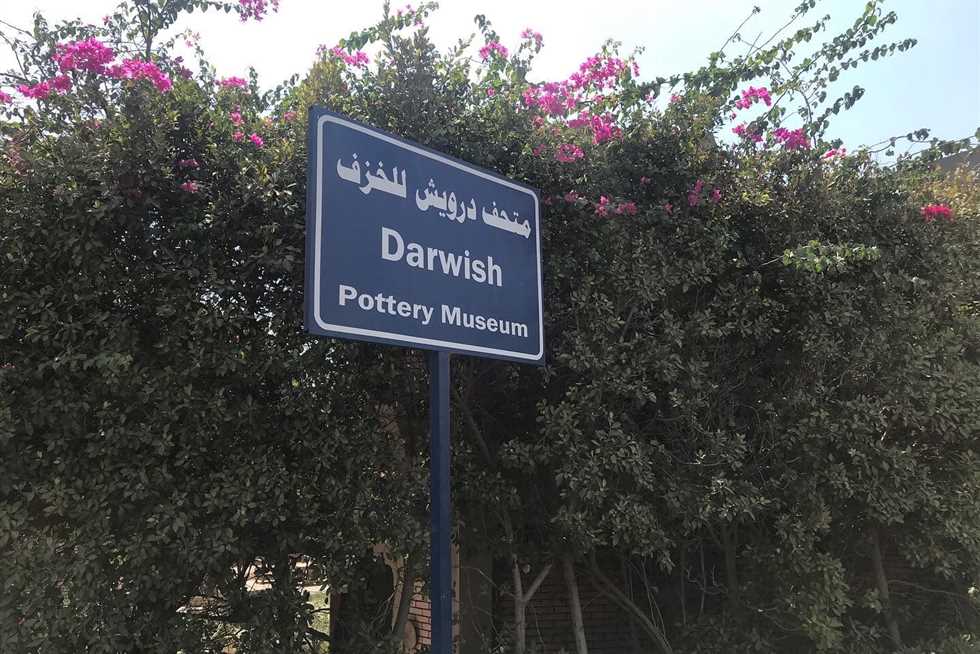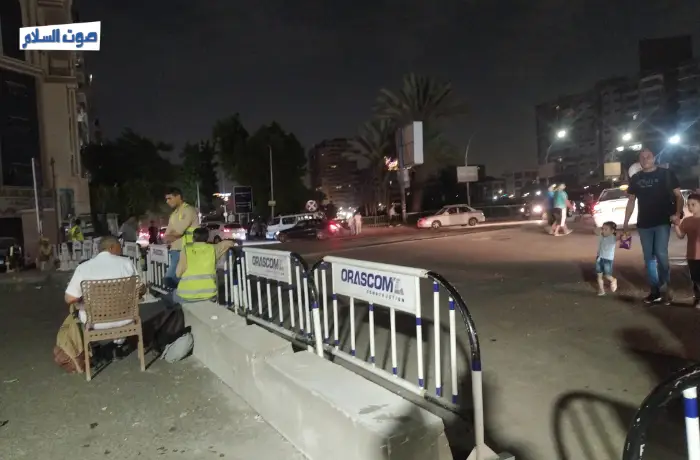It is a 2.2 kilometre, 31 minutes, walking distance from Dar Al-Salam Bridge to the U-turn where Fayoum main street, the most important street for Dar Al-Salam residents, is located. This street connects them to most services, starting from Education Administration building, then the schools complex which includes six schools; three primary schools, to preparatory ones, and one high school for girls, the only one in the area, moreover, many private tutoring centres are located in this main street since it is linked with the schools and students’ movements, also there lies Dar Al-Salam main Telecom Regulatory Authority, three traffic police posts, which all went out of service since 2010.
Fayoum Street starts at the end of Dar Al-Salam Bridge, which leads to Al-Maadi Corniche Road, where illegal microbus and tuk-tuk stations are located at both ends of the bridge, creating chaos and traffic congestion for all visitors and residents of the neighbourhood.
Illegal transportation stations are located at both ends of the bridge as it is near the famous Abu Talib commercial street, which leads to the Metro Station, whereas Fayoum Street is parallel to another commercial street, which is Al-Tal Street that is wide enough for one car to pass, with the exhibits of shops and street vendors occupying the other traffic lane.
A barely 70 cm island lies in the middle of the long street, while the one-way street has 5 car lanes filled with so many obstacles leading to its traffic congestion, narrowing the wide street to only one-lane street. On both sides of the two directions, there are pavements ranging in size from three metres to one and a half metres in some parts of the street. The majority of these pavements disappear under the exhibits of shops and the carts of street vendors, and some parts are used as a corner exhibit of commodities in favour of the famous Al-Jumhuriya grocery store in the neighbourhood, preventing pedestrians from benefiting from the pavements.
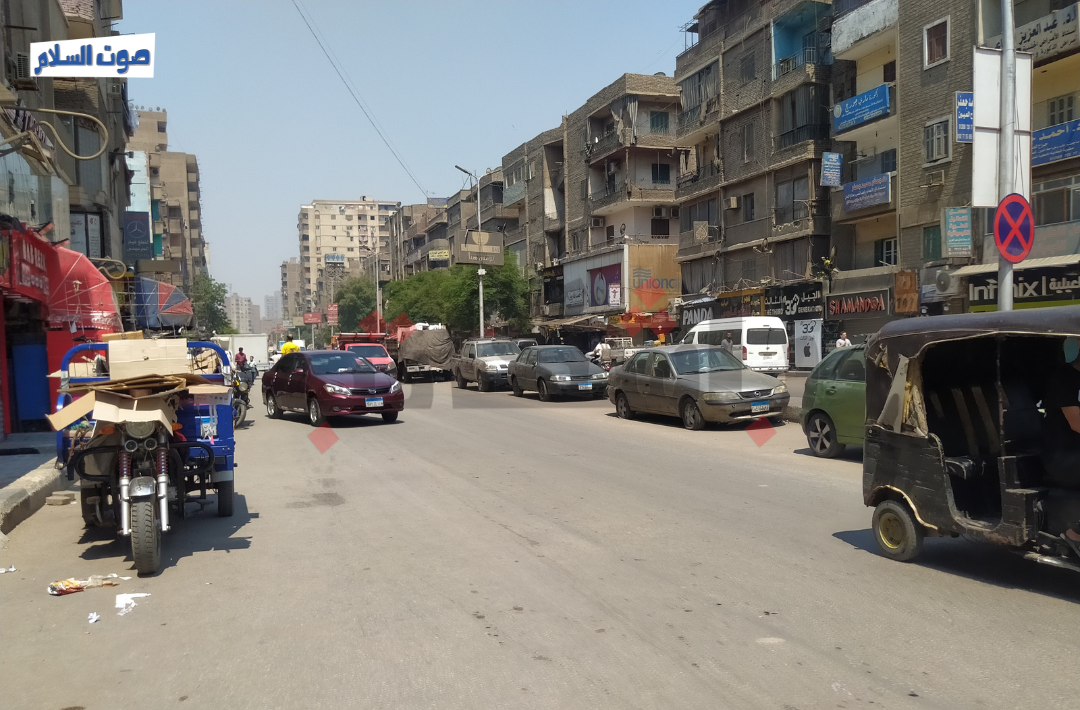
This organised chaos compels pedestrians to go through a daily battle with outdated microbus vehicles tuk-tuks, all competing on driving in the remaining lane using it as a two-directions passage, added to this the taxi and tuk-tuk drivers who sometimes drive in the opposite direction.
An Attempt to Find Solutions
Moaaz Kathiri, 24 years old, lives at the end of Fayoum Street, an area known as the U-turn; he spent his childhood there as his school and private lessons are located there, it was also the route to the university. Currently, he has set his work schedule with the street’s due to the traffic jam, preferring to designate part of his salary on using private transportation applications, instead of walking to the bus or Metro stations.
Moaaz spends 40% of his income on such applications, with a bill of around 1,500 EGP monthly, he pays from his job as a photographer in an advertising company.
His work requires effort and energy is keen on preserving for his working hours, and by the end of the month and his salary too, Moaaz is forced to walk from the beginning of the street to the microbus station, around 31 minutes of walking off the pavement in the middle of the cars due to the shops’ occupancy of the pavement.
The residents being unable to properly use the street revealed the chaos and lack of space for them; added to this the illegal microbus and tuk-tuk stations, “I wish I could walk on the pavement, but shops use it to display their goods, and whatever the city hall sends campaigns against stores’ occupancy of the street, the shops’ owners would display their goods again on the pavement,” said Kathiri.
A Random System
Maybe, on first glance, the scene would seem rather chaotic as the pavement disappears under the piles of goods displayed for passing customers, but the organised division of commodities and how the pavement is divided and “ground” rented to shop owners indicate there is somehow a “system” running this chaos.
Ten years ago, Mahmoud Mohamed, a pseudonym, opened a supermarket in Fayoum Street; this year, the shop’s rent reached 15,000 EGP monthly, as the owner knows well the popularity of such a commercial street. The shop is no more than 2 metres wide and stuffed with goods there is barely a place for Mahmoud or the customers to move, that’s why he uses the pavement to add a little space for his shop, and by taking the pavement in front of his supermarket, Mahmoud left no space for pedestrians to walk.
Mahmoud believes this is his right, and the right of the rest of the shop tenants, as their shops are too small for the expensive rents they pay, also the pavement is too small and can barely accommodate two people, “this area is considered part of the slums anyway, there is no order or clear system, cars and microbuses can park anywhere, so it is normal for us to find a way to display and sell our commodities,” clarified Mahmoud.
Tareq Anwar -Coffee beans shop manager- decided not to use the pavement to display his products, for he lives in this street and is annoyed by all the stores’ street occupancies, so he decided not to put the shop’s interest over the citizens’ right to use the pavement.
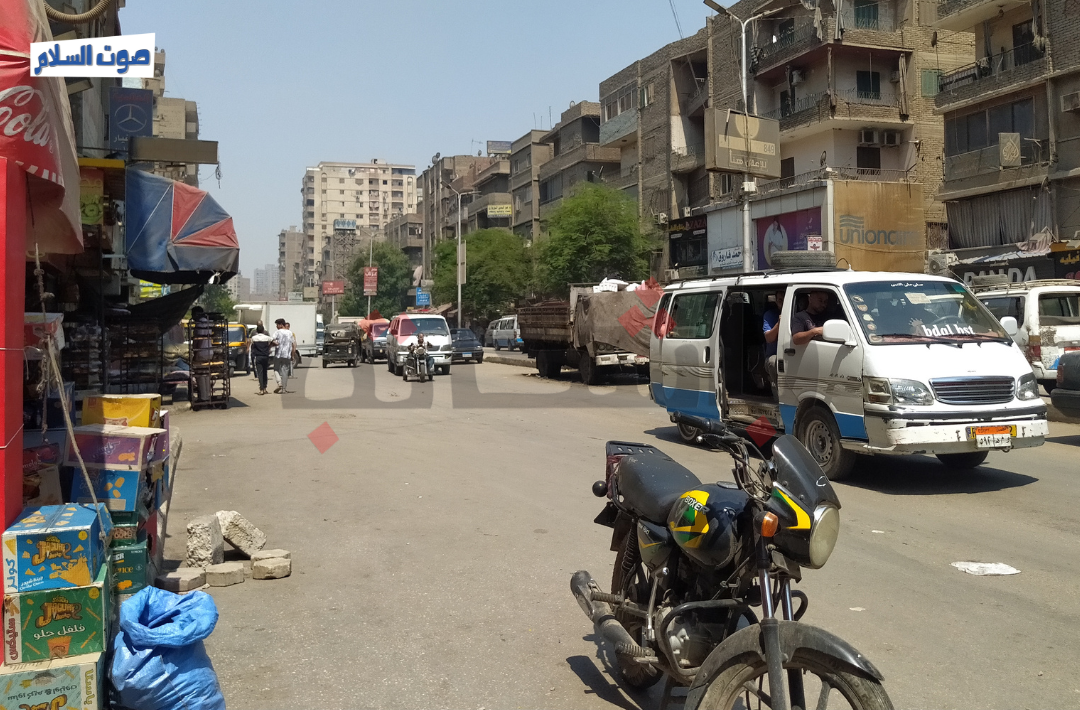
Anwar is not the only one who thinks this way, as many shop owners are committed to their stores’ space, to facilitate using the pavement for others, and also to not subject themselves to any fines for occupying the road, however, this is not enough to change the current situation.
Sout Al-Salam talked to a street vendor who rents a small space on the pavement to display his goods on a cart, the vendor explained that he pays 50 EGP per day to the shop owner in front of him, with the amount of 1,500 EGP per month; the price for renting a space in Fayoum Street ranges between 50 to 100 EGP per day.
In Abu Talib Street, renting a space in front of a store is more expensive, the cost ranging between 150 to 200 EGP per day, as trade activities are higher there. We contacted a street vendor there, he pays 70 EGP per day for the building owner in front of him, with the amount of 2,100 per month.
Some owners agree to let street vendors occupy the space in front of their shops without renting it to them; it all depends on the owner and their stance from renting the space, whereas city hall clearing campaigns still pursue those vendors daily, costing them their commodities. The vendors, by renting the space they set their goods on, guarantee not to be sent away by the shop owner, as well as provide them with a space to quickly hide their goods, whether inside the opposite shop or building, in case they heard of the approach of the municipal clearing campaign’s cars.
